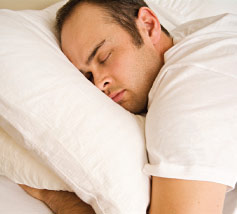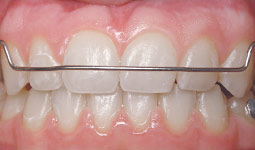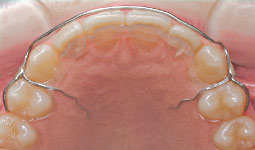Why Orthodontic Retainers?
Retainers are used to protect your new smile

Dear Doctor,
I have just finished wearing braces to move my teeth at the ripe old age of 53 and my teeth look great. But now my orthodontist tells me that I will have to wear retainers every night. Can you tell more about this?
Dear John,
It is common to wear retainers following orthodontic treatment or what people commonly refer to as braces. To understand why has to do with what allows teeth to be moved by orthodontic treatment. Teeth are joined to their boney housing through a unique attachment apparatus known as the periodontal ligament (peri-around, odont-tooth). This is a suspensory system rather like a hammock arrangement, where the strings of the hammock are akin to the fibers of the ligament. The fibers insert into “cementum” of the tooth on the one side and into the bone on the other.
The teeth will tend to relapse into their old position quite rapidly if the retainers are not worn.
Here's the interesting thing, all these structures are living and “labile,” that means they change all the time. The cells of the periodontal tissues continually remodel — when light forces are placed on teeth (as in orthodontic treatment), these tissues adapt so that as the teeth move all the tissues remodel and reform around them. The process takes a long time, beginning and ending slowly. If too much force is applied to the teeth, the remodeling process can cause trauma and damage to both the periodontal tissues and the tooth roots to which they are attached.
 |
| The above photograph shows an example of a typical retainer worn in the upper jaw. |
 |
| The above photograph shows how the retainer fits around the upper teeth with plastic covering the roof of the mouth. |
| Photos provided by Dr. Robert S. Quinn |
Once the teeth are in the new and desired position the remodeling process does not stop abruptly and needs time to reach its normal “dynamic” state. The teeth remain stable in their new position as a result of two things:
- The first is that they are “retained” or stabilized in the new position long enough for the bone and ligament to reform and mature around them, which can take several months. The teeth will tend to relapse into their old position quite rapidly if the retainers are not worn.
- The second reason that teeth “stay put” and don't move on their own is that they are generally in a “dynamic” or balanced position in the mouth, dictated by the lip and cheeks on the outside and the tongue on the inside. Often the most esthetic position of the teeth is not the most balanced position necessitating indefinite retention. Since it is not always possible to direct growth as it is when orthodontic treatment is done in adolescents, it is sometimes advisable in adults to ensure this balance on a longer term. Therefore, retainers may be indicated indefinitely to ensure that the teeth don't move.
If the idea of wearing removable retainers for the long term can seem daunting a common alternative approach is to have thin retainer wires bonded to the inside surfaces of the front teeth to prevent movement. These are commonly left in place for several years and are quite popular with patients. The advantages are they don't show and you don't have to worry about taking them in and out, reducing the compliance required with removable retainers.
Additionally, if grinding habits are discernable, especially at night, an occlusal or bite guard may be recommended that acts not only to protect against excessive biting forces, but also to keep the teeth from moving.
Hope this both explains and answers your question. It may be a good idea to review any further concerns or questions you may have with your dentist or orthodontist.



